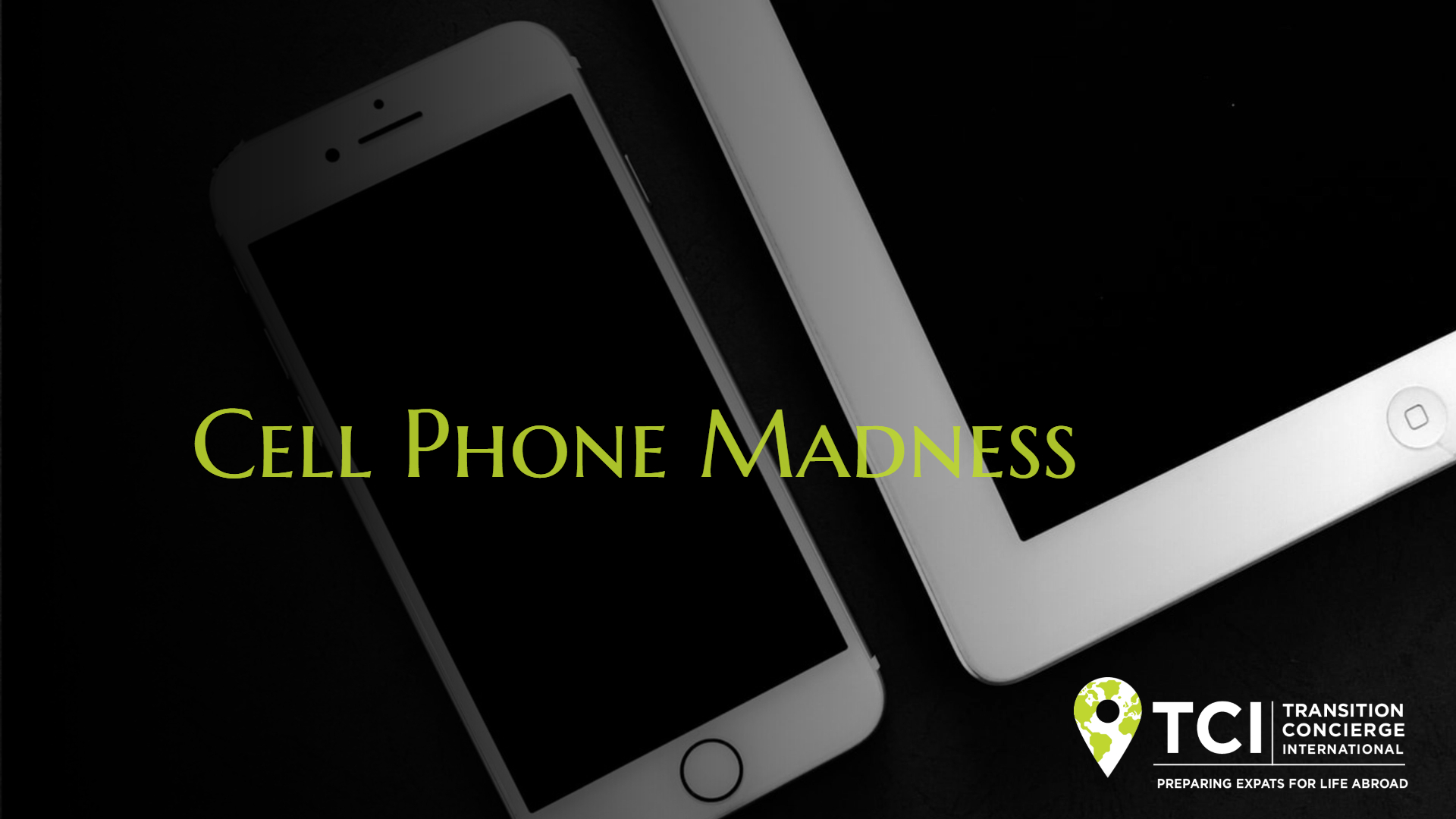Expat life demands reliable communications no matter where we are. For many of us, our cellphone is a lifeline to every aspect of our daily routine.
Today it’s hard to imagine being unable to call anyone from anywhere. I remember early in my sales career scrambling to find the nearest payphone in between meetings. My first “car phone” weighed over 1kg and needed to be permanently mounted in the vehicle.
Now we carry what is essentially a handheld computer (that just happens to make voice calls).
Cell service nearly everywhere

Cellular service is now pervasive in nearly every corner of the globe. It is mind-blowing that there are nearly as many cellular subscriptions as there are people (7.5 billion). Every country typically has a few options for service. Choosing how to connect is critical to managing expat life without breaking the budget.
International cell phone service starts with the phone. It must be unlocked from any specific carrier and an AT&T/T-Mobile/Rogers/Telus style phone (not Verizon/Sprint/Bell). With 4G/LTE service now available globally you should use the most current version possible.
Every year handset companies expand cellphone capabilities to be compatible with as many global networks as possible.
The best devices are unlocked international versions typically sold through Amazon and eBay. These usually do not offer a USA/Canadian factory warranty so it’s critical to purchase only factory sealed phones (not refurbished). The best online stores back up their products with a replacement under specific conditions (Amazon has a 30-day guarantee).
My preference is to use Android phones since an iPhone is expensive and more restricted. The message is to purchase as many phones as you can afford. Don’t go cheap here, you will thank yourself later.
Service options
For service there are three options:
- Turn on international roaming on your existing cellphone (easiest but expensive).
- Activate a global SIM chip (easy at lower cost).
- Purchase a local SIM chip and prepaid service when in-country (a little more work but usually with big savings).
Global service is easy to use by simply turning on international roaming for your existing phone but it’s very expensive. I only find this is viable when transiting many countries on a short trip.
Purchasing a SIM card
Purchasing a Global SIM is also popular which requires an unlocked phone. If you’ve completed your contract your cell service company can arrange to unlock your current device. This can be a nice short-term solution if you’re not ready to pop for a new phone. These Global SIM services also sell inexpensive unlocked 3G cell phones which are, unfortunately, the older generation. Service rates are on the expensive side at ~$100USD per month for 2GB of data.

One of the most exciting developments is Google Project Fi. It is 4G/LTE service on current technology using their own phone lineup. Once you activate (must be done in the USA) voice/data service roams seamlessly in over 135+ countries at the same rate ($10/GB).
There is no long-term service requirement and can be terminated with 30 days’ notice. The Moto G6 and Moto G7 are particularly good buys. This is a great way to have one phone number you can use anytime, anywhere.
My personal preference is to purchase a local service in every country. Prepago SIM chips are typically easy to acquire (Peru is a notable exception) and work well for visits as short as 1 week. For example, Movistar Ecuador offers service for $6/week (600MB data, 60 min voice, unlimited WhatsApp messages).
Adding credit is easy with nearly every mini-mart or cellphone store able to “top-up” your account. Having a local number is helpful when using Uber or Easy Taxi so drivers are comfortable calling to confirm your ride. They are less likely to call an international number which can sometimes cost as much as your fare. Many airports have cellphone desks located inside the arrivals hall so you can activate service immediately.
I’m sure experienced travelers have stories of how to conquer cellphone challenges on the road. Share your connected strategy so everyone in the TCI community can benefit.


